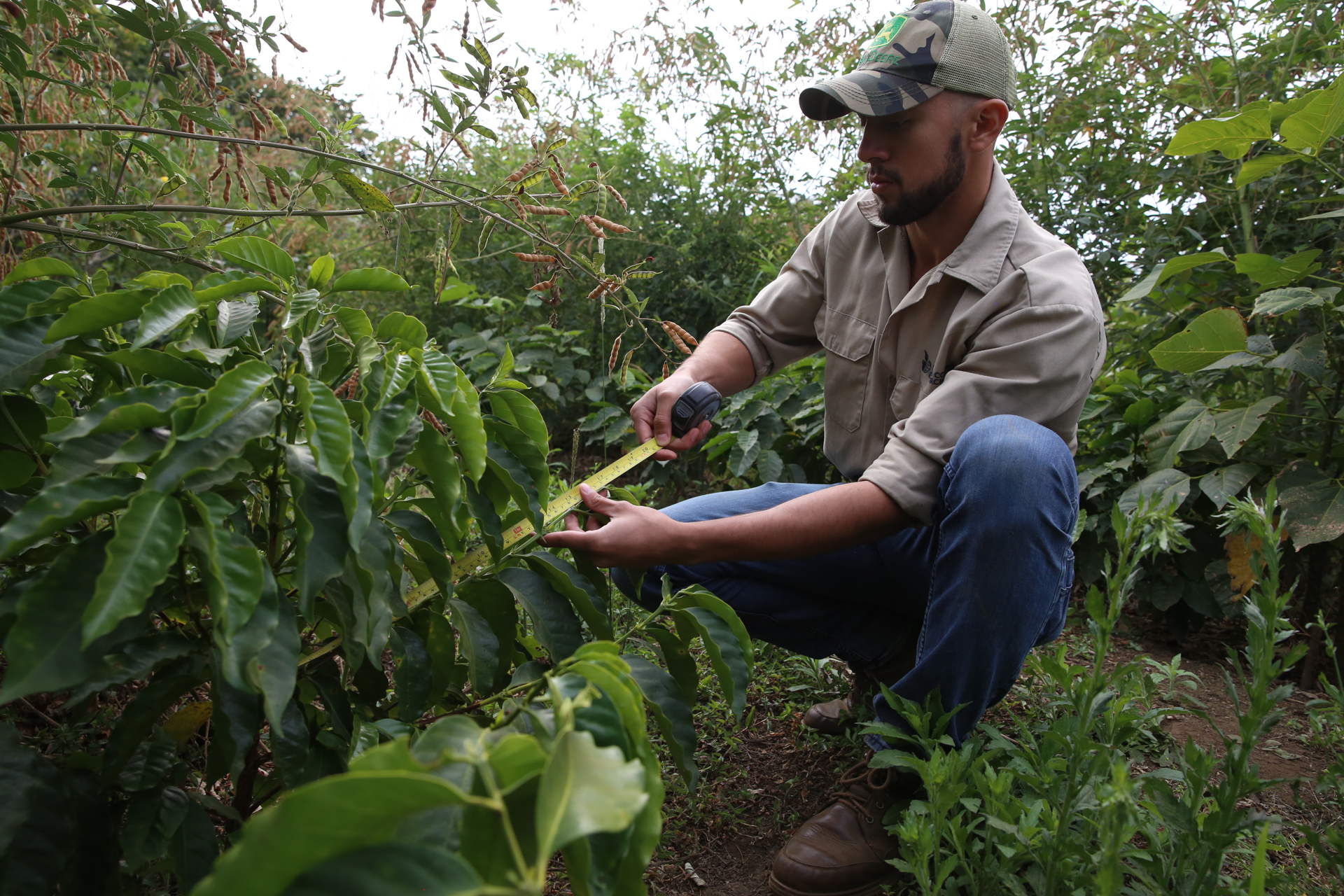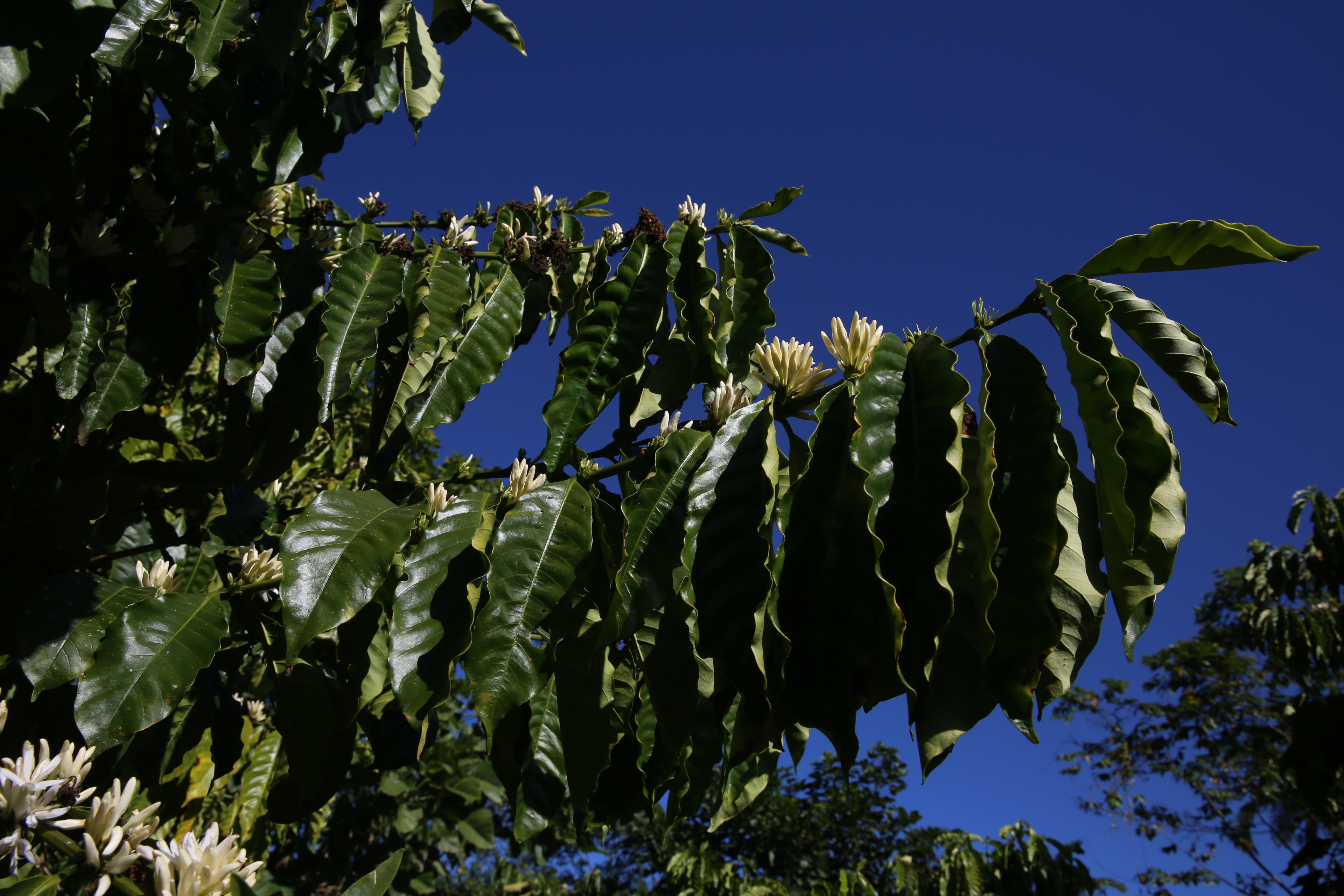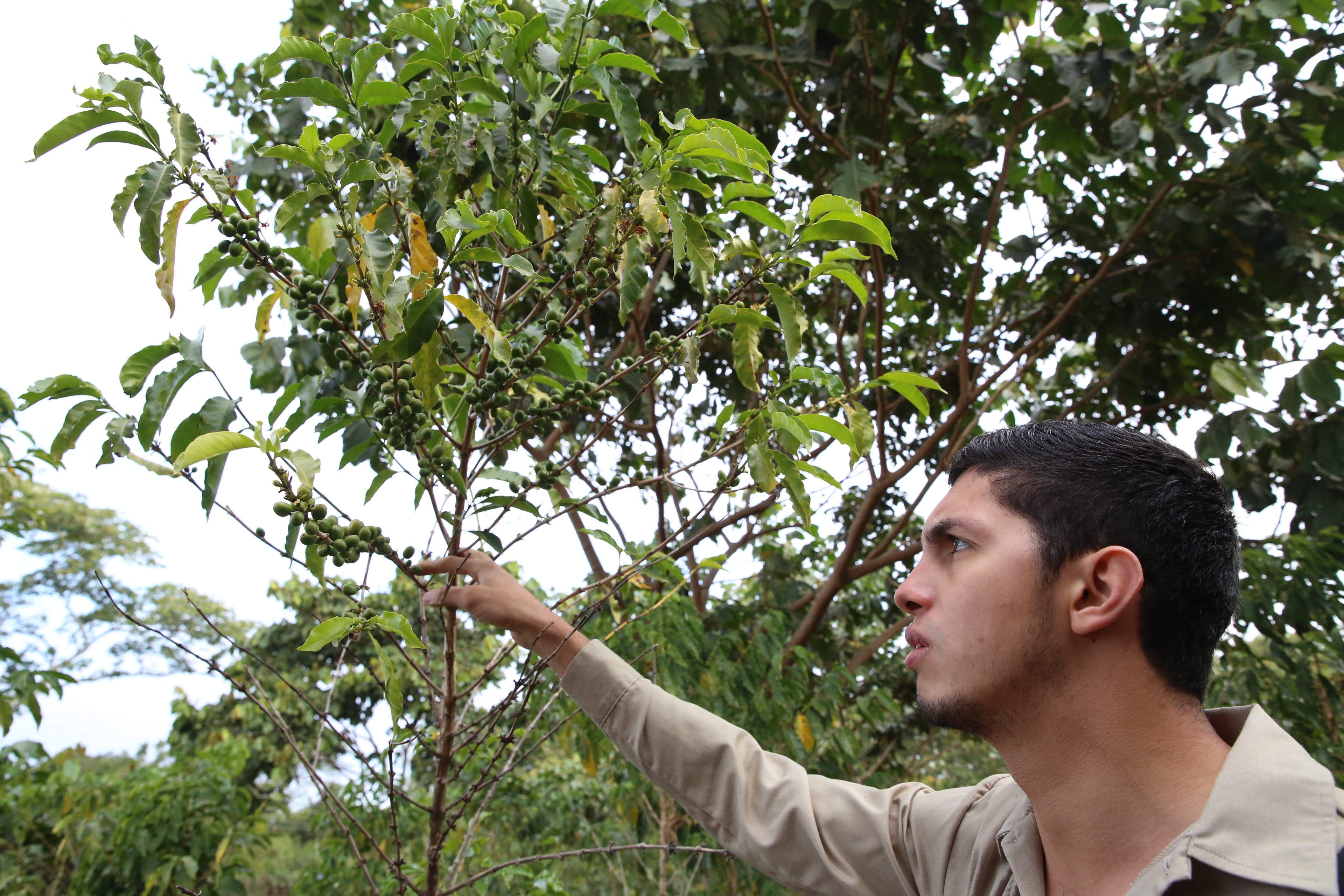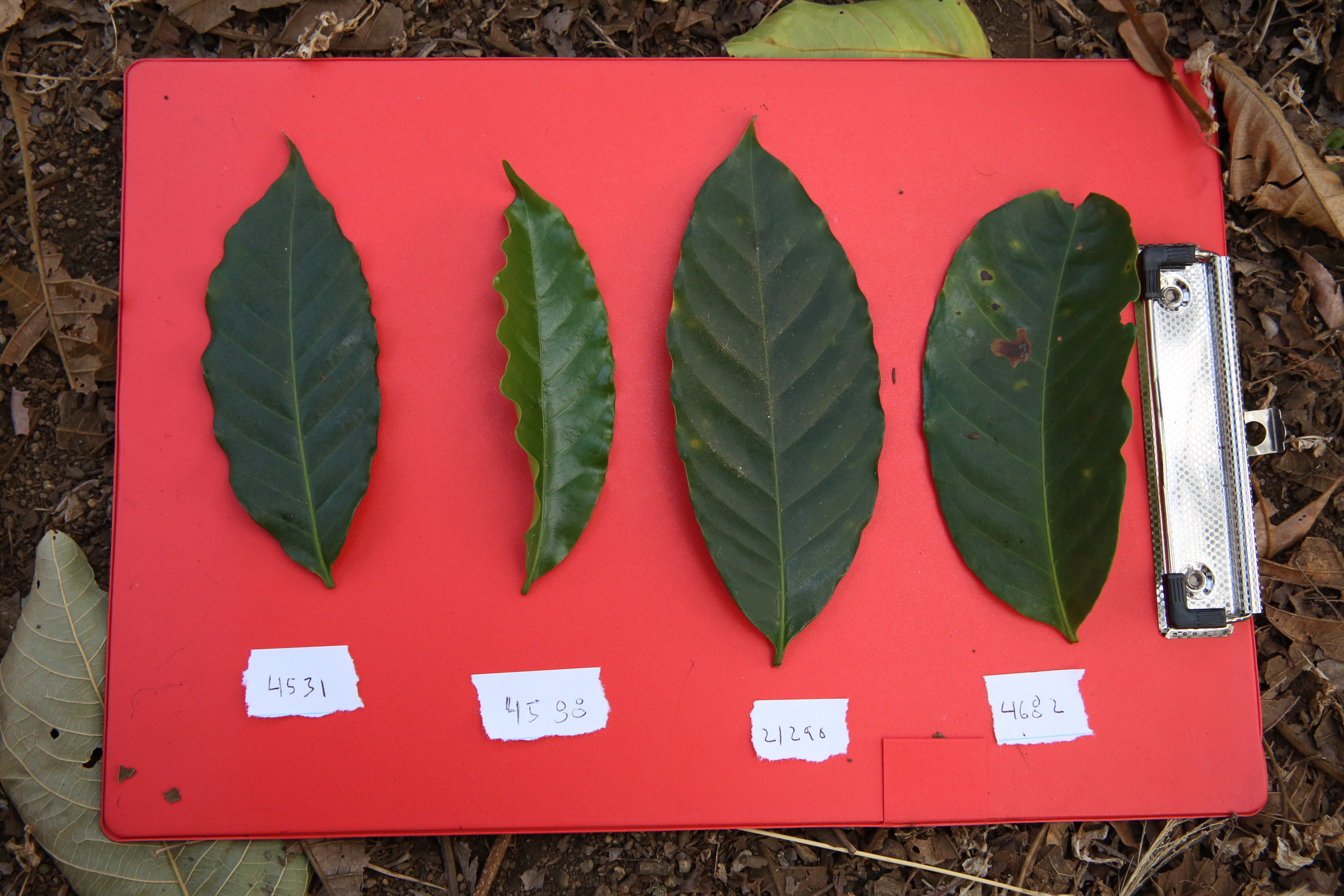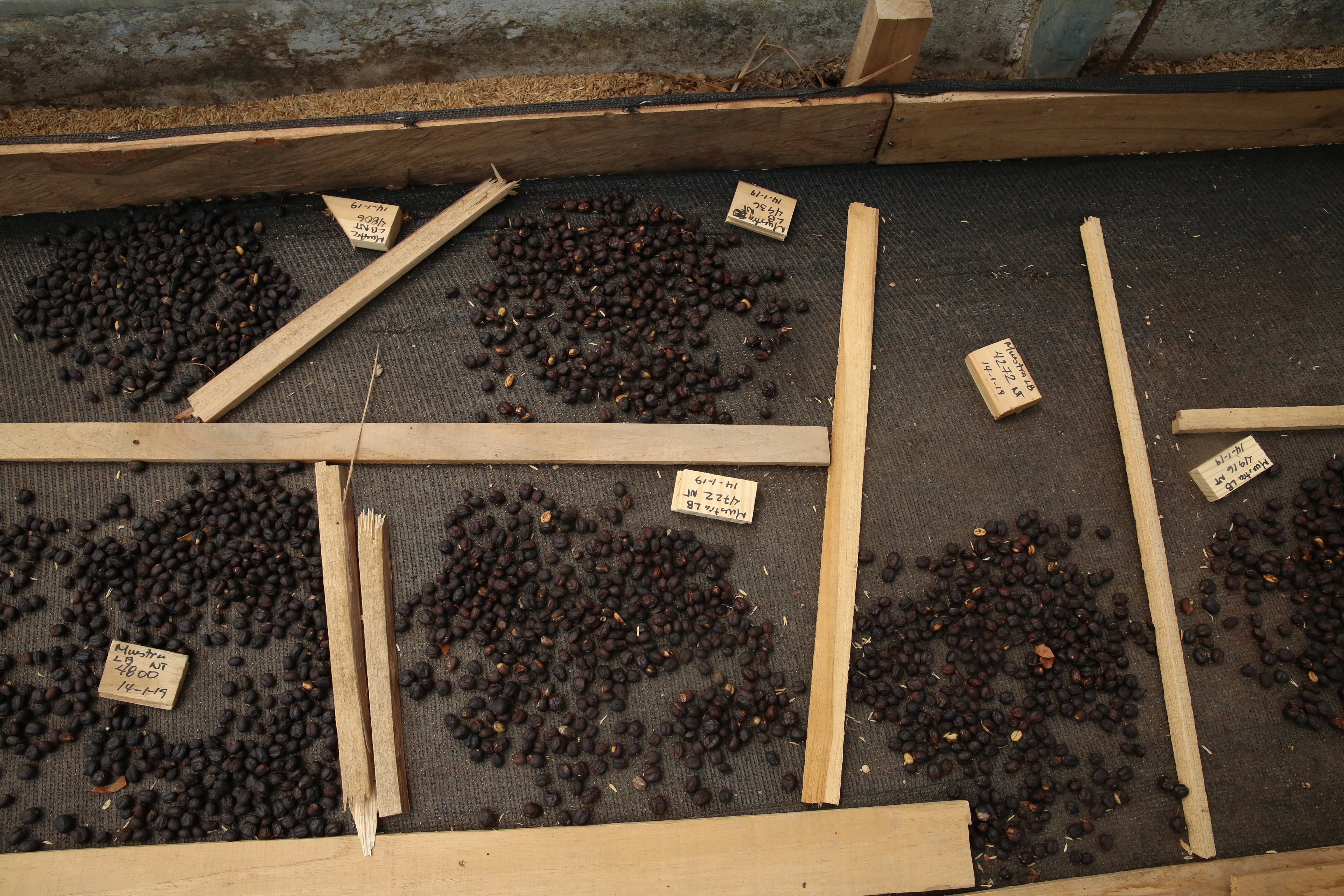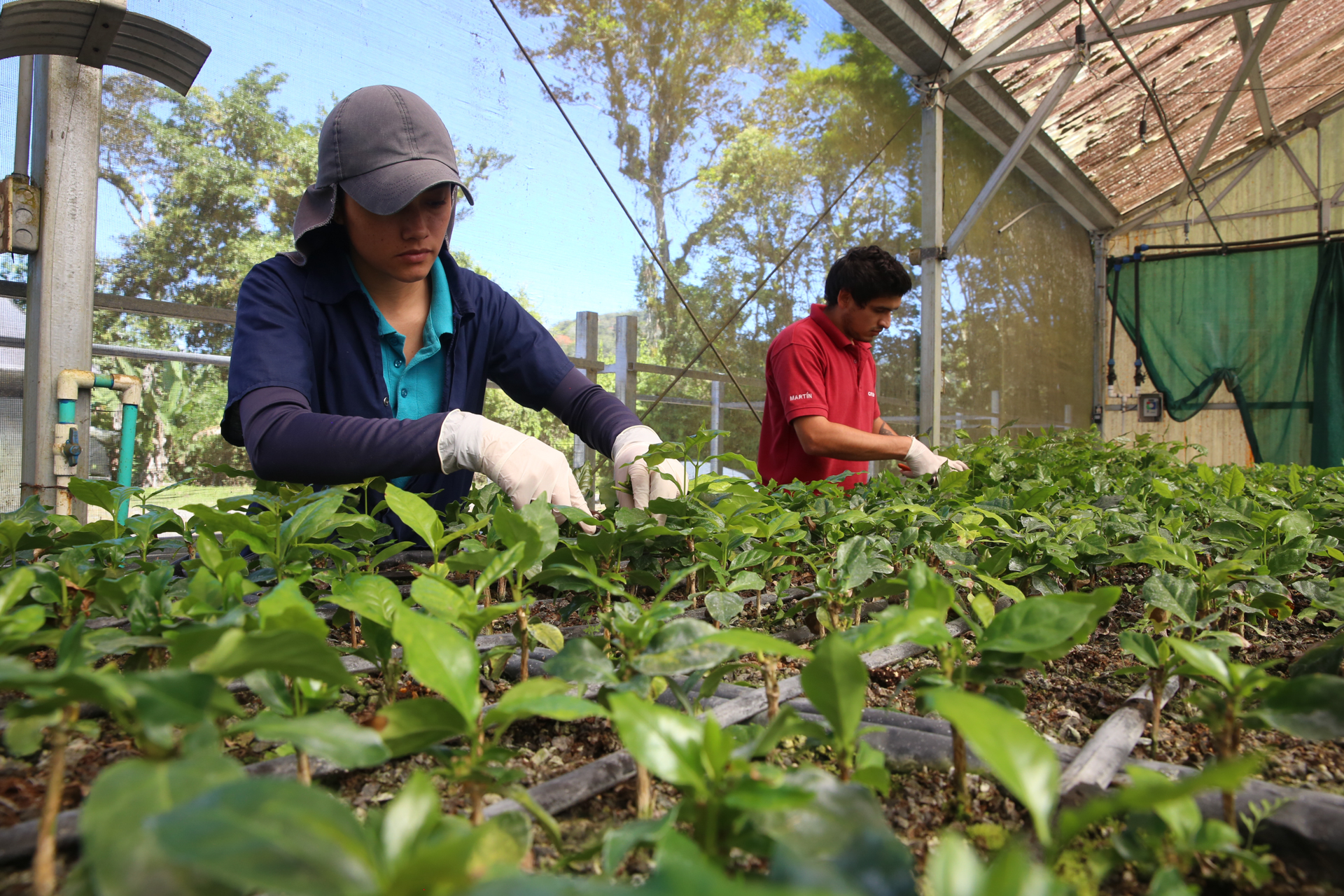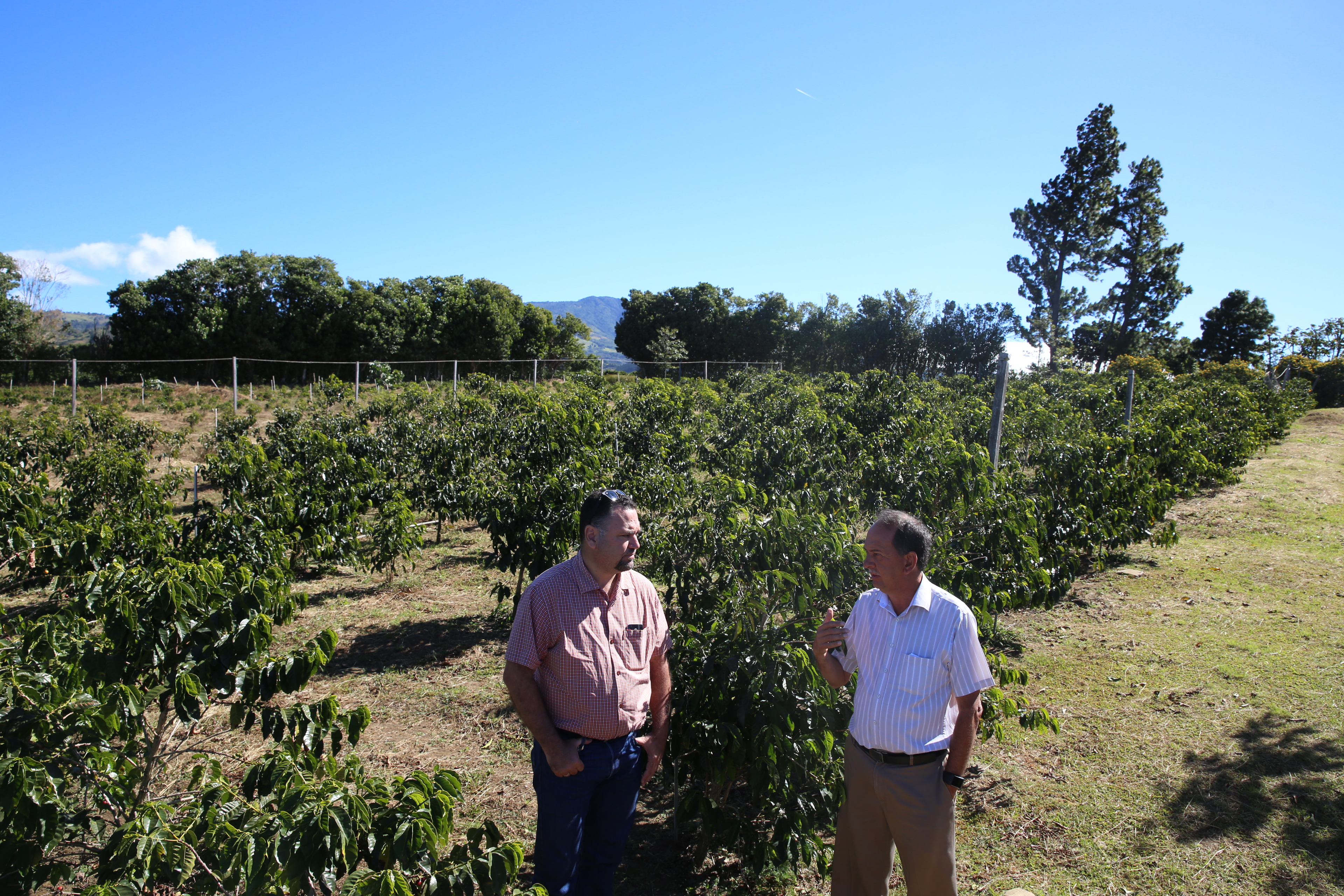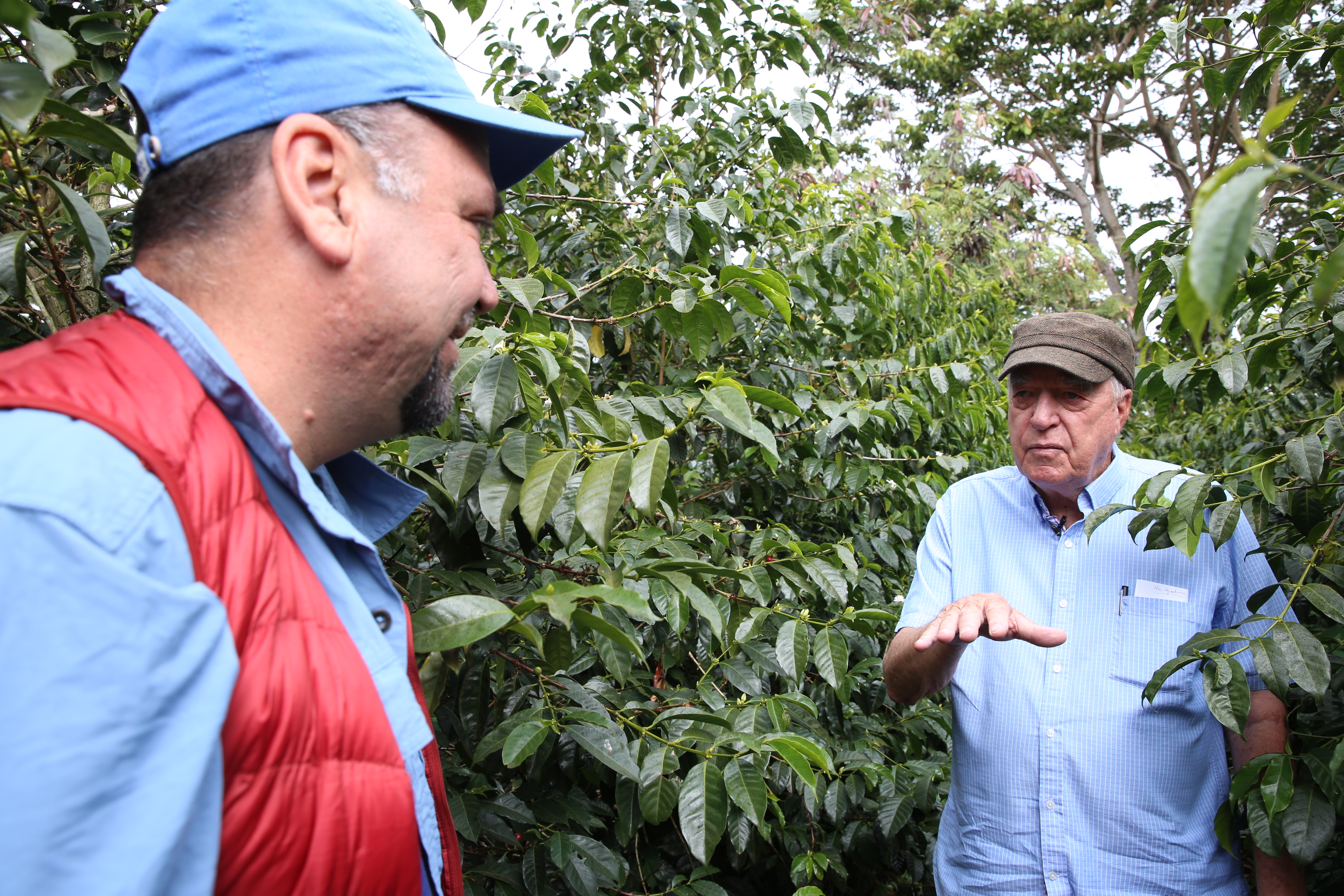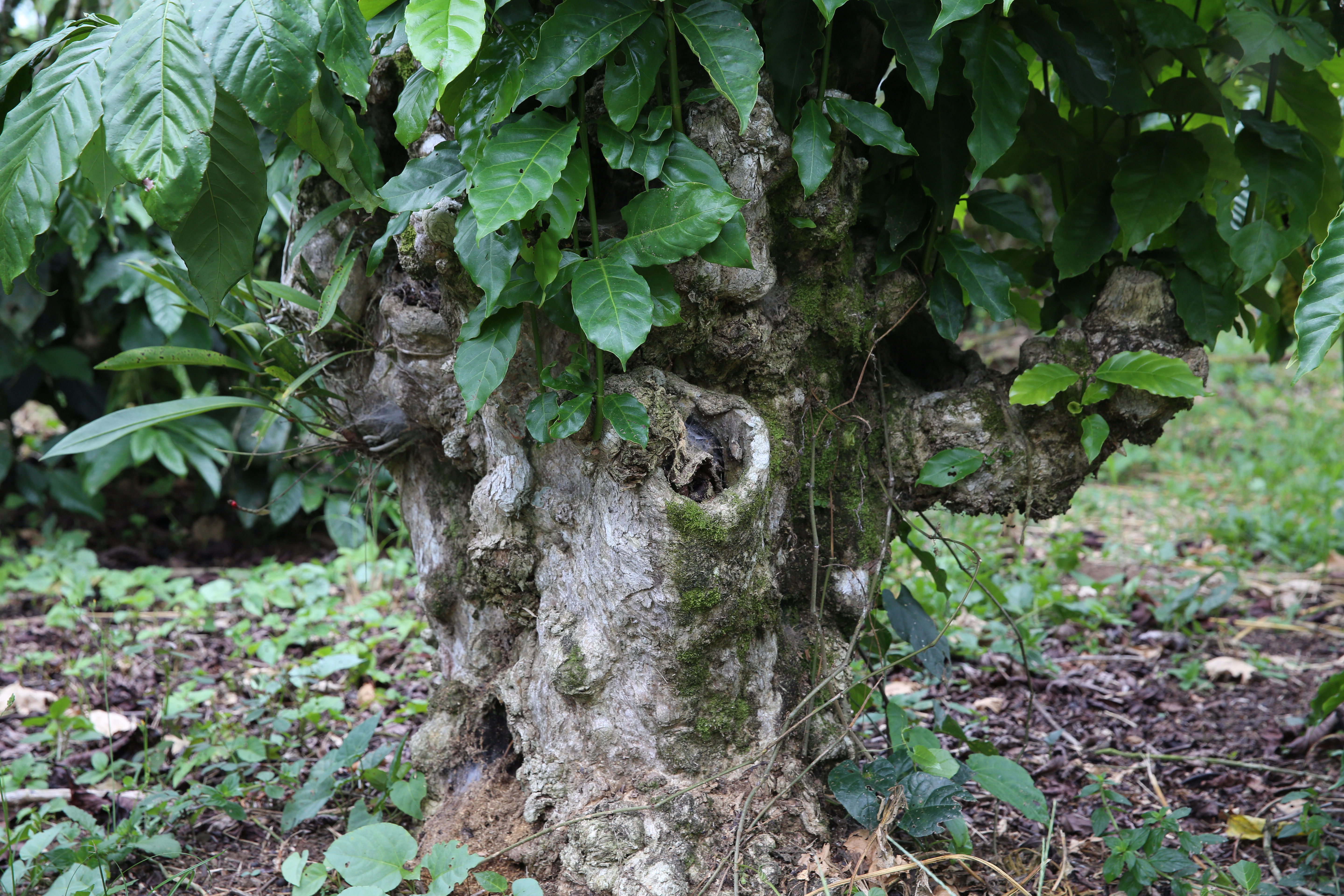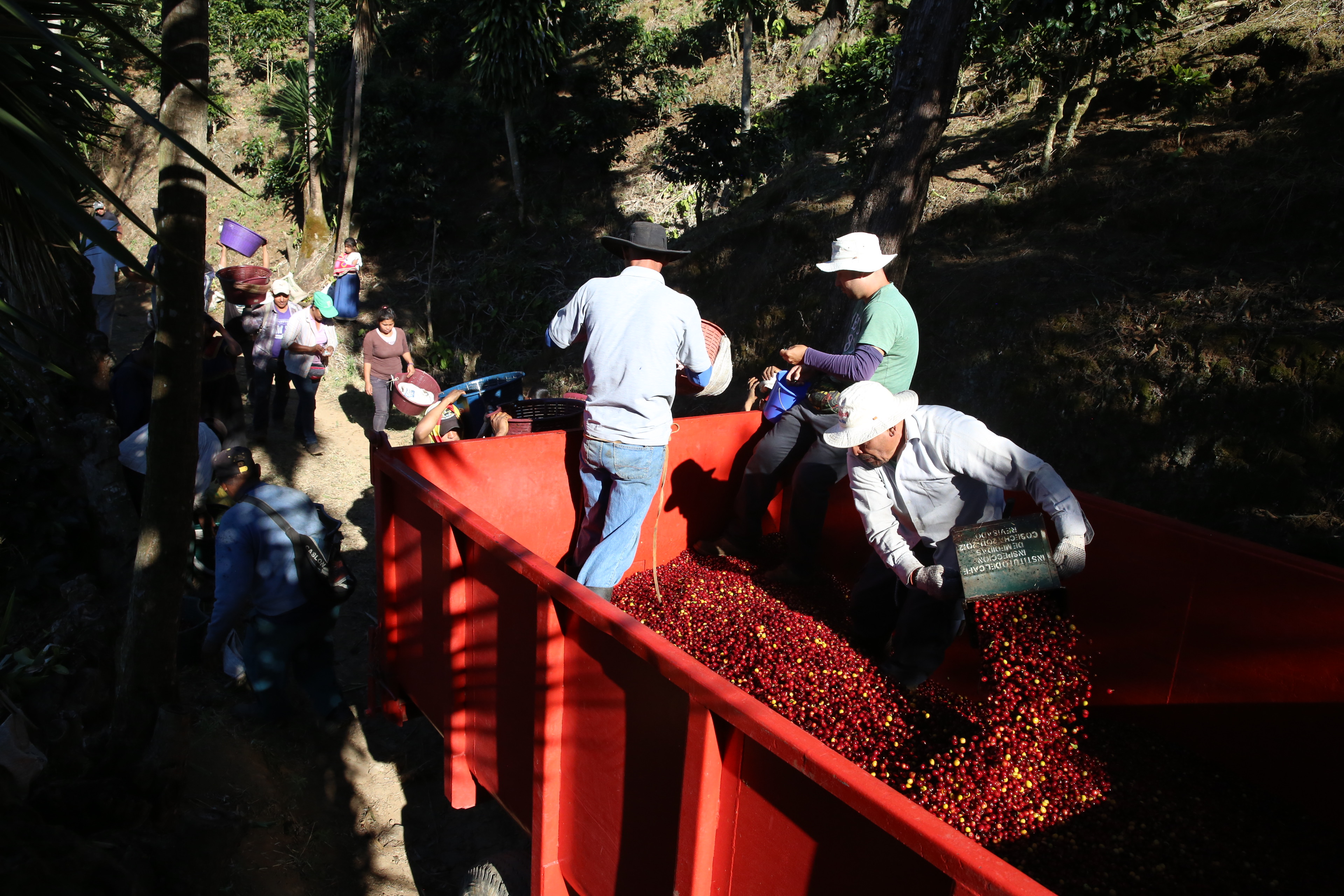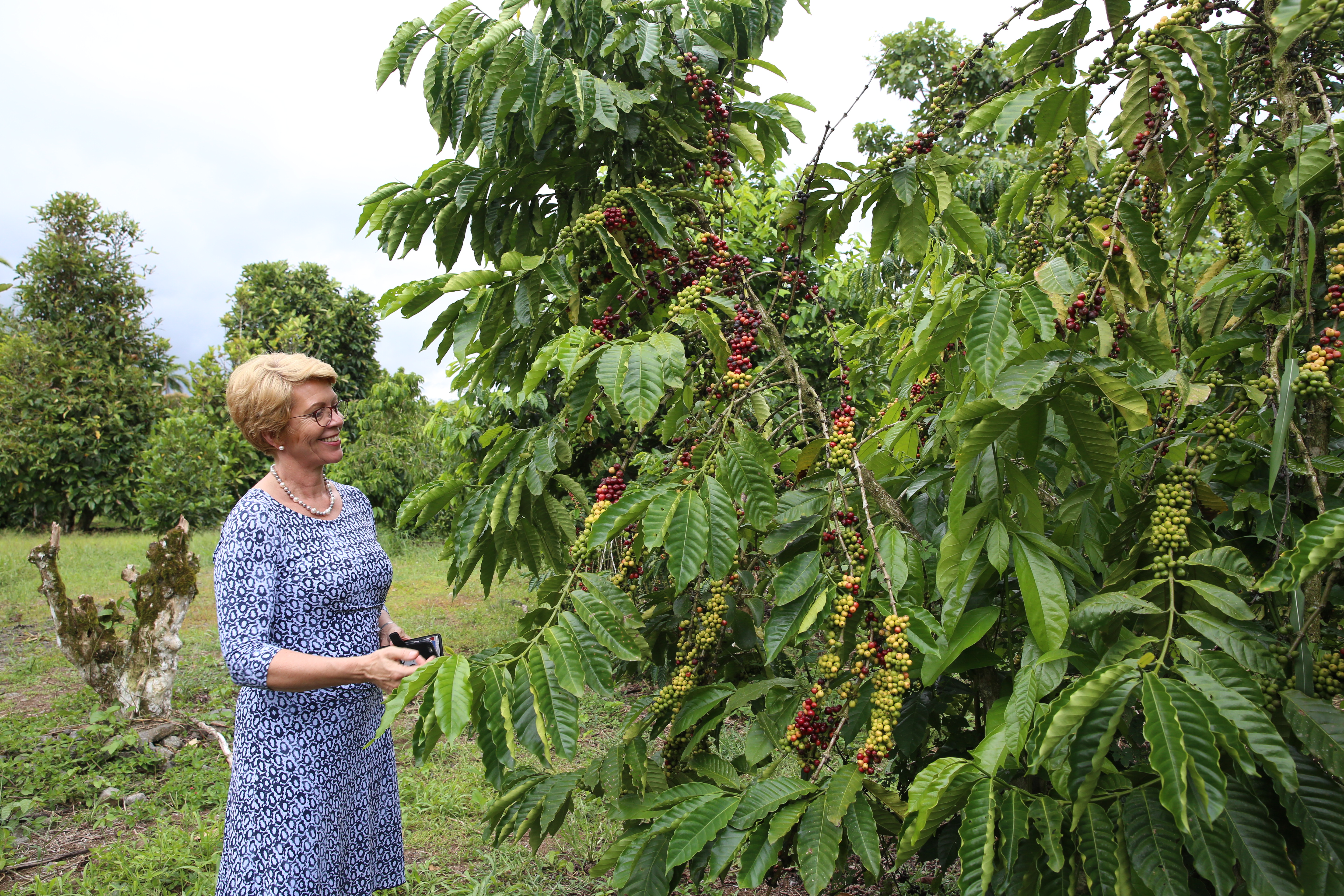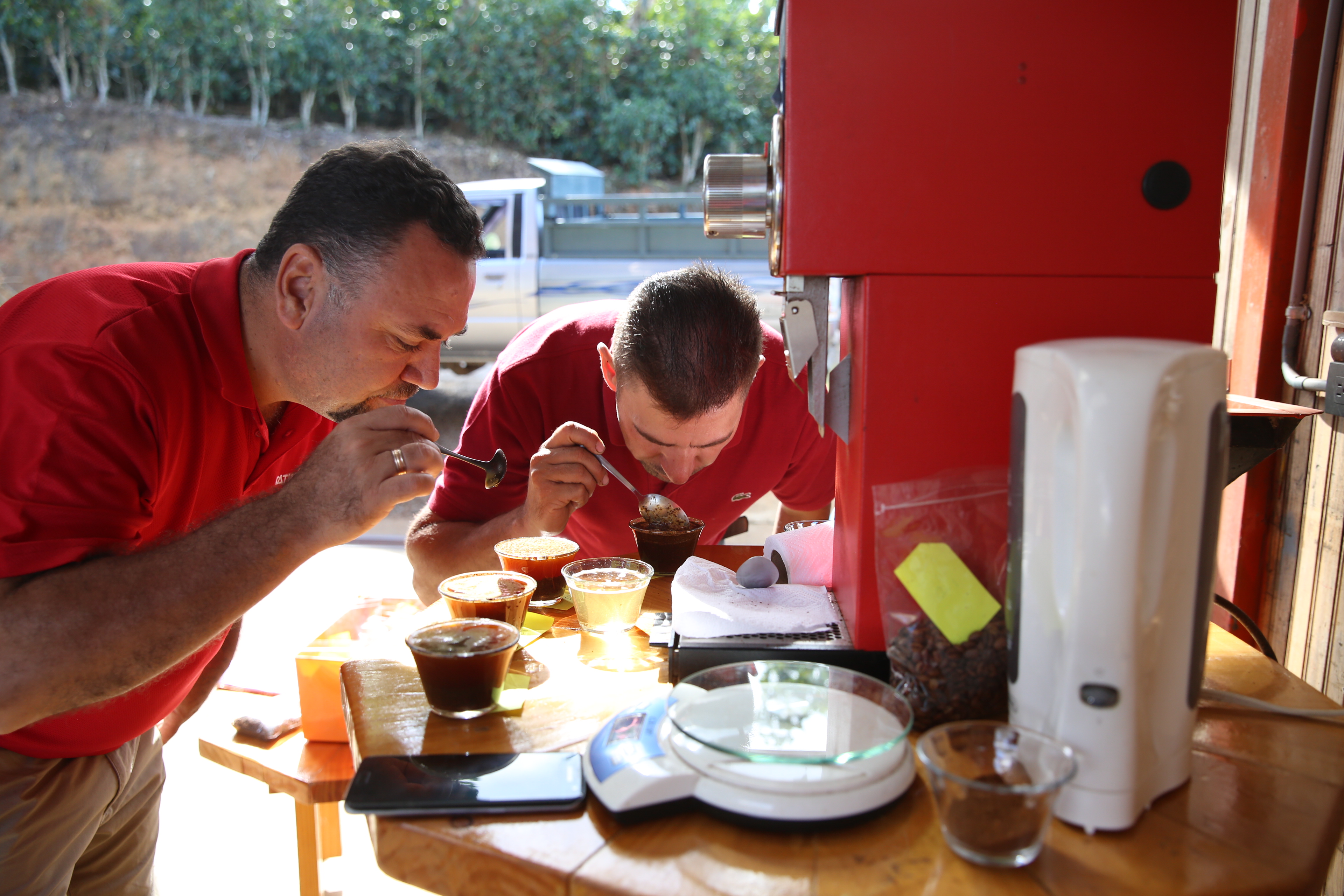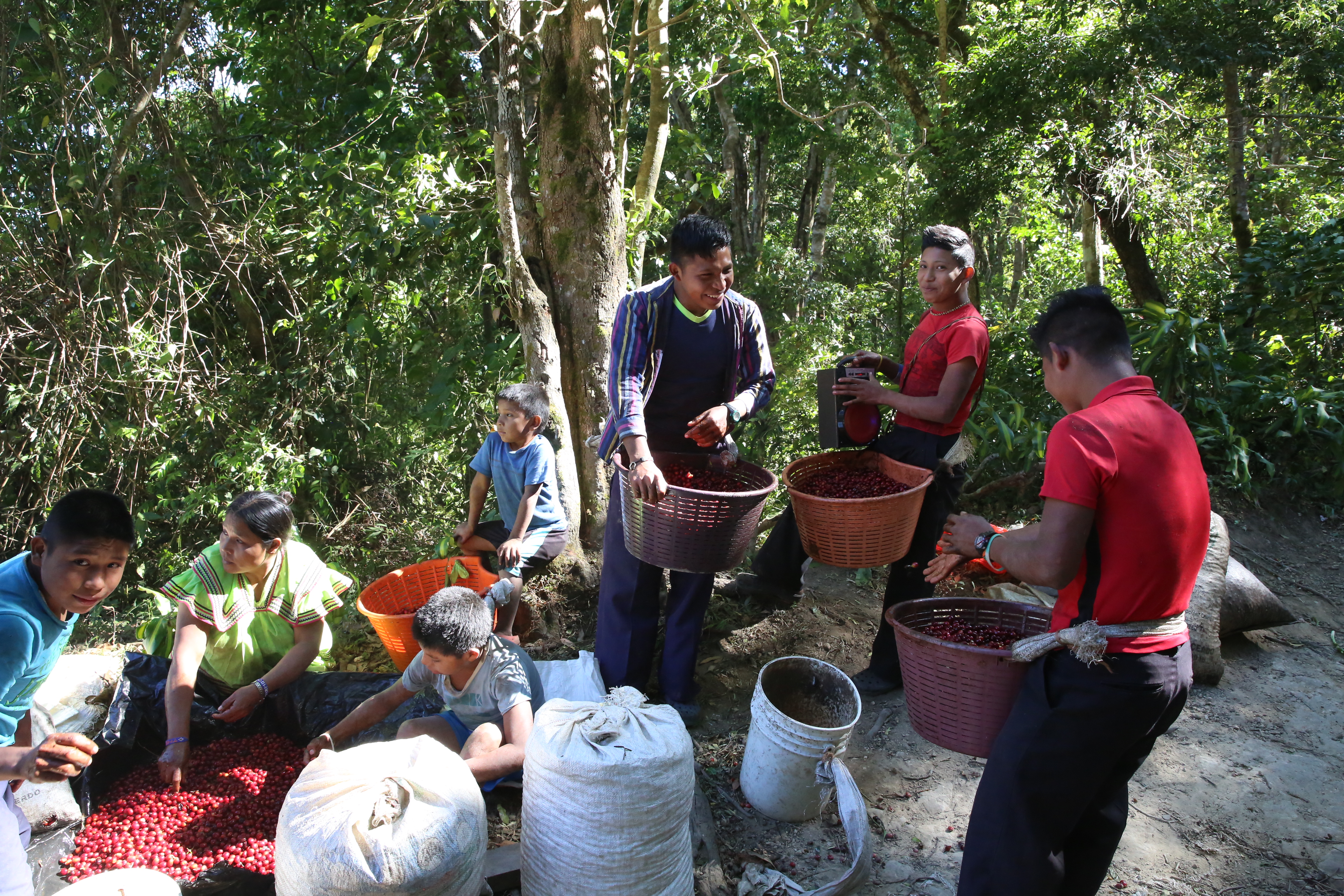-
Coffea arabica is a diverse species. Yet a 2014 study of farmed and wild plants found that only a fraction of the species’ genetic diversity is represented in cultivated coffees. Wild arabica is certain to hold many more surprises, which can make coffee more secure, more productive and even more delicious.
Unfortunately, in 2019, wild Coffea arabica was declared an endangered species.
-
SEVENTY YEARS ON, A GLOBAL GARDEN KEEPS THE COFFEE HOT, PART 2
Text by Paul Cox, Scriptoria for #CropsInColor
Photography, video and additional reporting by LM Salazar
-
Coffea arabica’s endangered future is shared by more than 40% of the 100-odd wild coffee species, whose environments are being disrupted by climate change, deforestation and other human-caused pressures. With extinctions looming, coffee collections like that of CATIE, the Tropical Agricultural Research and Higher Education Center, in Costa Rica, grow ever more essential.
-
THE PRESENT
COFFEE’S CENTRAL AMERICAN LABORATORY -
Following the 2014 diversity study, World Coffee Research (WCR), a non-profit collaborative research and development program of the global coffee industry, investigated some 800 wild arabica types in CATIE’s collection.
-
They examined the plants’ DNA to see if they could select a subset of the whole collection which retained a majority of the overall diversity. This is called a “core collection.”
-
One hundred trees were selected as the core collection that breeders will search for the raw materials to develop two new types of coffees for Central American farmers — a highly disease-resistant dwarf form for lower altitudes and a tall, flavorful variety for higher ground.
-
As a first step, the core collection is now growing at sites of different altitudes in Costa Rica and El Salvador – and even, much further afield, in the hills of Rwanda. This both safeguards it, and allows researchers to evaluate the performance of its constituents under contrasting conditions.
-
CATIE is continuing to generate new hybrids, too. Their efforts have been motivated by the latest resurgence of the disease known as leaf rust, which overcame the crop’s defenses and caused a production crisis in the region between 2008 and 2013. At the same time, breeders are also seeking to create more knockout varieties that can captivate the market, like the famed Geisha.
-
In Costa Rica, CATIE makes available many of its improved materials (developed in 1992) from its collection through a private nursery that propagates and sells hybrids in large numbers. This type of partnership also allows CATIE to gather data on materials growing in many different environments, at many different elevations.
-
One enthusiastic partner is Coffea diversa in the Talamanca mountains of southern Costa Rica, a specialty coffee grower with its own diversity garden of 700 varieties and wild plants – billed as “the world’s largest private coffee collection”.
-
With so many farms joining in, Costa Rica has become something of a collaborative coffee laboratory. Even the most recognizable face of the global coffee industry, Starbucks, takes part on its large coffee farm, Hacienda Alsacia.
-
The Starbucks farm is presently studying a 100-plant core collection of CATIE’s wild coffee, and they are gradually selecting the best of these. Additionally, they have committed to share to data regarding the potential of these varieties with CATIE’s researchers, as well as with farmers in the region and elsewhere.
-
The farm that rediscovered Geisha coffee, La Esmerelda in Panama, is still involved too. The farm’s owner, Price Peterson, explains that they are now working with a large collection of other materials from CATIE, looking for more of those magic cups.
-
Among all this activity, it is easy to forget that the collection itself is a garden of living plants that must be taken care of every day.
-
Most of CATIE’s trees are now over 40 years old. The diversity of types means they also have different needs for shade, pruning and fertilizer, even soil and altitude. While a secure collection should maintain at least three trees of every accession, CATIE has only a single individual remaining for hundreds of its accessions.
-
“Four years ago we made our last inventory of the collection, and unfortunately we found we had lost more than a hundred plants, corresponding to almost forty accessions.”
“That saddens us a lot, because we do not know if those materials are safeguarded in another place. If it is lost in its original habitat, and we lose it in collections like CATIE’s, we lose it forever.”
William Solano
International Coffee Collection Curator, CATIE -
THE FUTURE
THE NEXT GREAT CUP -
In the coming decades, a changing climate will fundamentally change coffee production. Researchers know that higher temperatures and less reliable rainfall will hit this crop hard – because they already have. These shifts lead to stressed trees, poor yields, and bad quality beans, and also allow diseases and pests to expand their ranges. The areas of the globe suitable for coffee farming will shrink and generally move to higher elevations.
-
The Crop Trust is preparing for this future. In collaboration with World Coffee Research and coffee genebanks around the world, it has developed a global conservation strategy for coffee, and is now putting it into action.
-
“A key part of the global coffee conservation strategy is making sure so-called ‘origin collections’, are safe for the long term,” says Marie Haga, Executive Director of the Crop Trust. “These are 4 collections, including CATIE’s, which maintain the bulk of the crop’s original, raw diversity. The first step is to help CATIE come up with a plan to reach the highest international standards of conservation – because there is no other collection like this one.”
-
With a stream of specialty coffees from dozens of countries circulating through the world’s coffee shops, it is easy to imagine that we live in a golden age of coffee.
-
World production has grown for more than fifty years, and the choice on offer has never been more exciting.
-
But rising production costs, falling prices, climate change, and constantly-evolving diseases are making it extremely difficult to sustain this momentum.
-
If coffee cannot adapt to these changes, those who will suffer first will be the small-scale farmers and their families in rural areas who build their lives on coffee. But they will be followed by all those who process and drink the stuff.
-
The next coffee revolution will be based on making full use of the diversity of the crop. This is why collections like CATIE’s are so fundamental to the future.
-
“The most important coffee collections need to be conserved, securely, forever,” says Marie Haga. “They need to be linked together in a global system, operating strategically in open collaboration. And the incredible diversity they safeguard needs to be used by breeders and farmers to make a more diverse and adaptable global crop.”
-
And a tastier one too, why not?
-
#CropsInColor celebrates the critical importance of crop diversity and its beauty and cultural relevance across different landscapes. It highlights many key actors in our food systems – from consumer to farmer to seed bank – who are doing their part in safeguarding, making available and using crop diversity.
#CropsInColor is made possible by the generous support of Corteva Agriscience.
-
The Crop Trust and WCR estimate it will cost about USD 1 million a year to support the most important collections. An endowment fund of USD 25 million, paying out 4% per year, would provide that ongoing funding forever, without the need to scrape together funding year to year. The Crop Trust and WCR will now work to find funding for the Crop Trust Endowment Fund to ensure secure funding for the coffee collections, forever.
Invest today in the future of coffee. If 25 million people (out of the 7.5 billion worldwide) donated just a dollar, coffee would be safe forever.
